How Do You Send A Camera Reboot Command Using Blue Iris Software?
Knowledgebase for everything IP Photographic camera Surveillance and Smart Living
BlueIris MQTT with Node-Carmine
- Konfigurieren des BlueIris-MQTT-Dienstes
- Steuerung von BlueIris durch MQTT
- Admin Befehle
Configuring the BlueIris MQTT Service
To activate the MQTT Service enter the BlueIris Software Settings:

Switch to the Digital IO and IoT tab and click to Configure the MQTT service:

In this example I am using an INSTAR MQTT Camera as my MQTT broker. Type in your broker IP address (due east.g. IP address of your camera), the broker login and port:
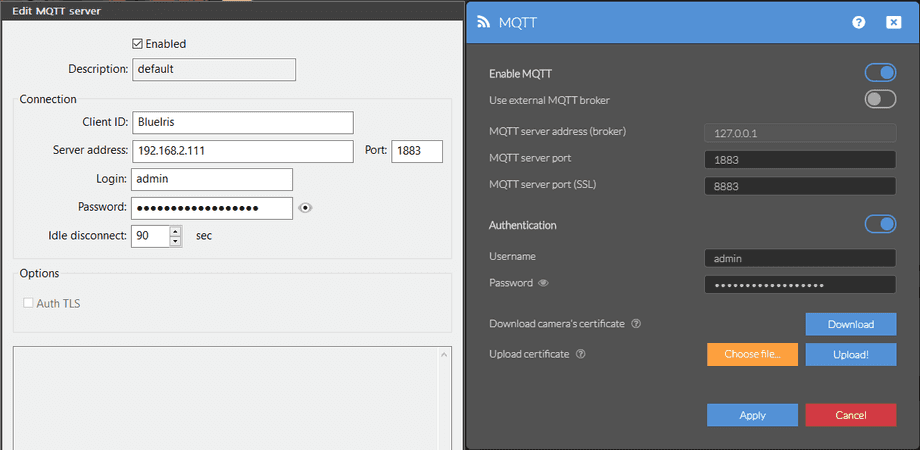
MQTT Alarm Service
At present right-click your cameras alive video and select Photographic camera Settings from the pop-up menu. In the settings menu switch to the Alerts tab and click on ON alert... in the Actions section:
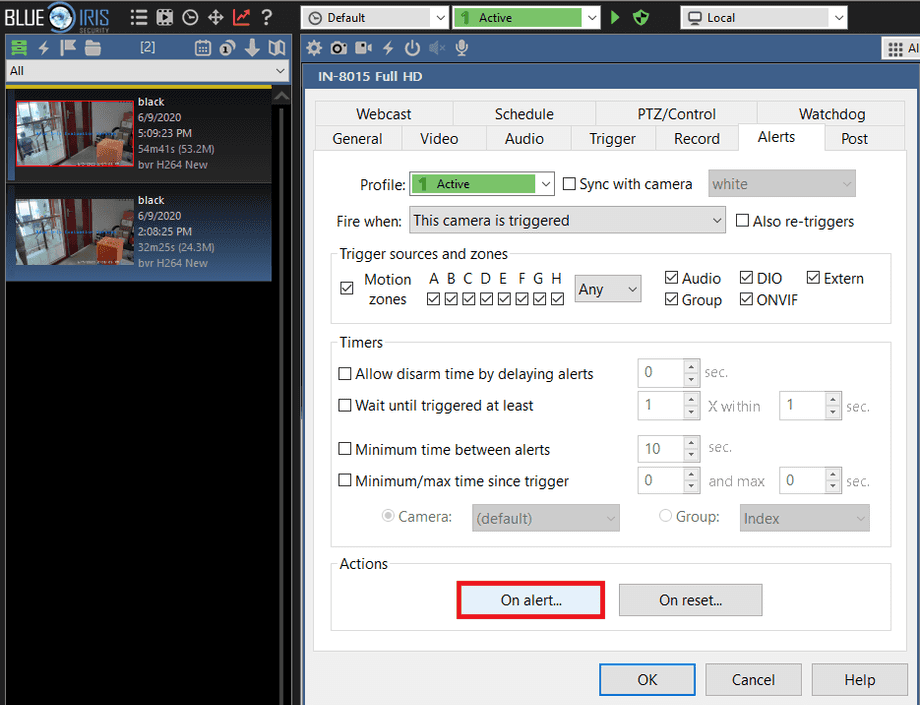
Here we tin define the action that we want to be triggered if the camera enters the warning state. Choose Spider web asking or MQTT:
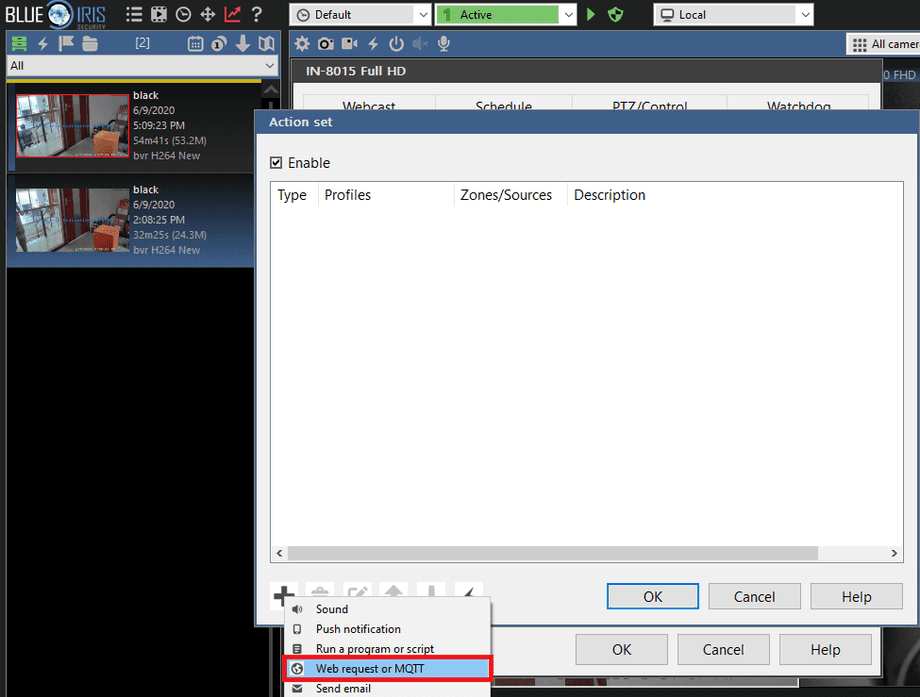
Choose an MQTT Topic - you can proper noun it freely according to your MQTT setup. As payload choose 1 or ON to signify that the alarm state of this camera was activated:
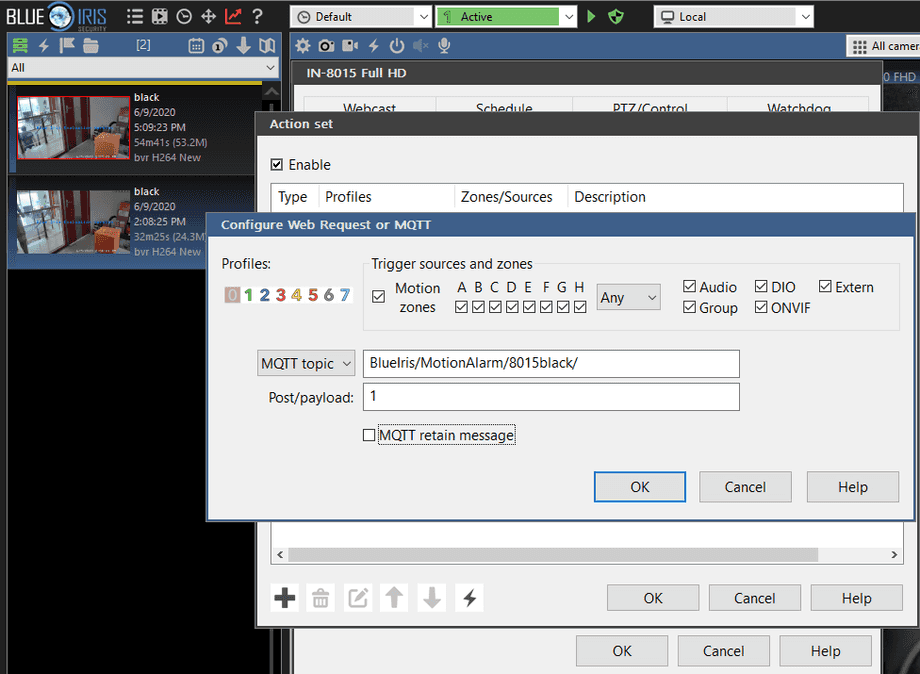
Now nosotros can define another topic that is to updated in one case our camera falls back to idle. Click on On reset... to keep:
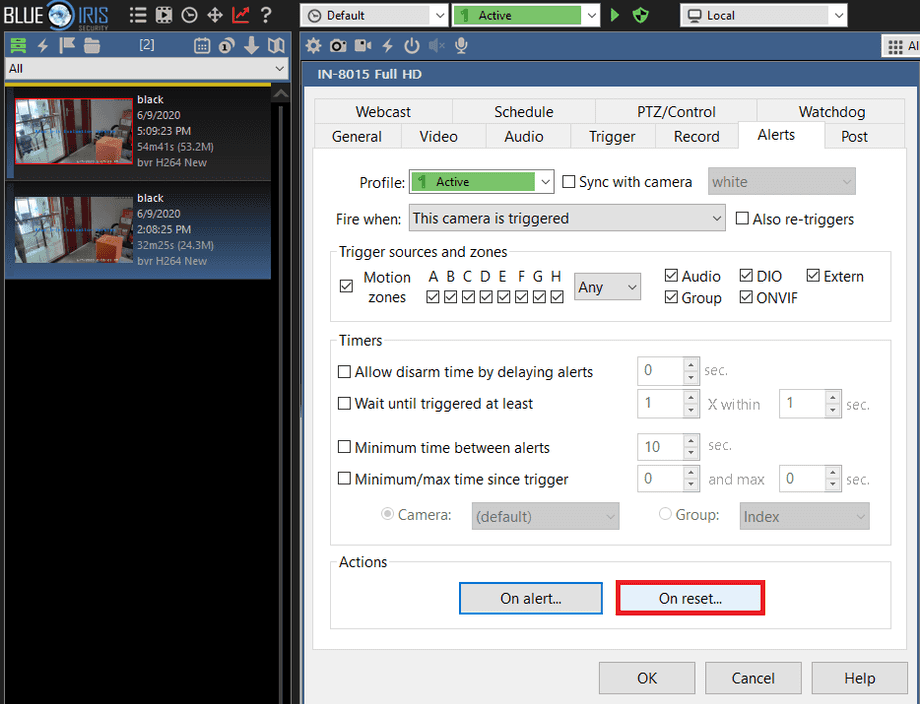
Here I choose the same topic that I had before. Just this time the payload will exist 0 or OFF:
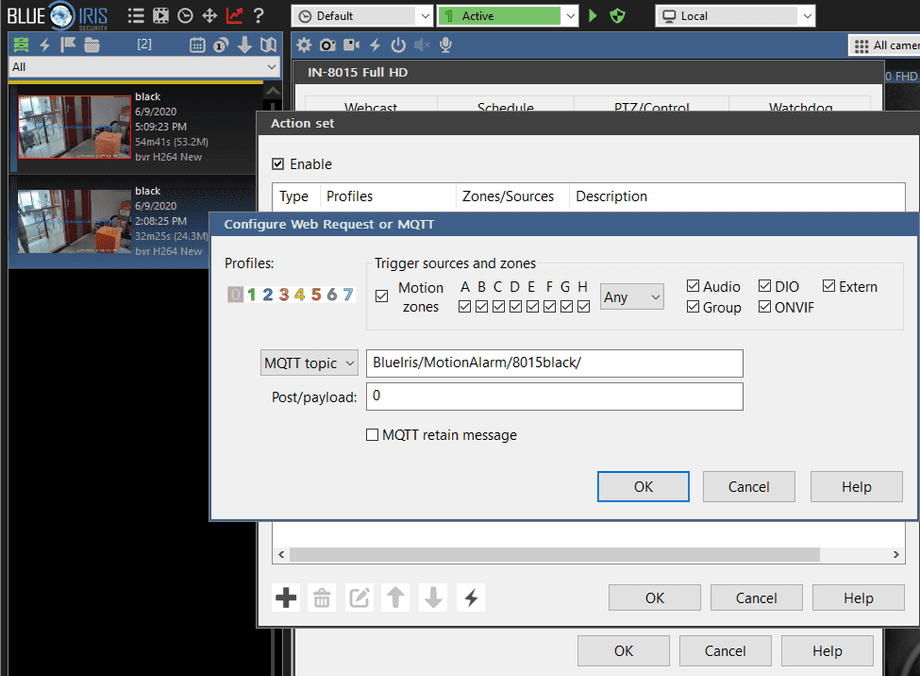
Click on the Lightning symbol to test-run your MQTT topic. You tin can use an MQTT debug tool to run across whether the topic is successfully updated. In my case I have an instance of ioBroker running to see the result of the exam:
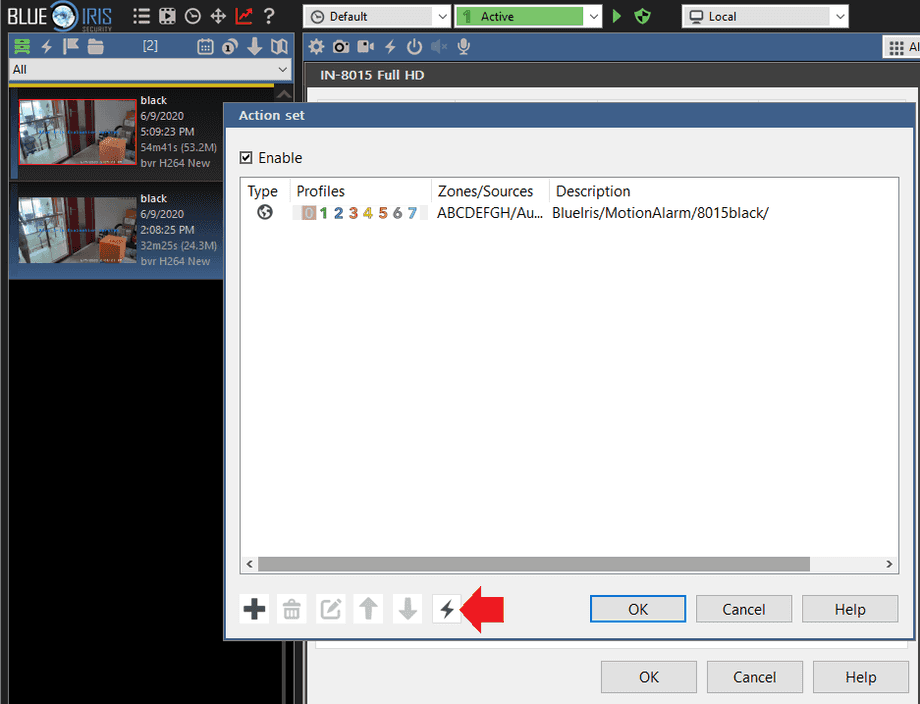
Now we are receiving an MQTT update, every fourth dimension BlueIris triggers an alert - nosotros tin go on working with that in our smarthome solution, e.g. ioBroker, Node-Cherry, OpenHAB or Home Assistant.

Controlling BlueIris through MQTT
We can also use MQTT to trigger events inside the BlueIris software. For example you can utilize a tool like MQTT.fx to ship the following payload to the MQTT topic BlueIris/admin:
-
camera=cameraname&trigger(replacecameranamewith the photographic camera shortname you defined for your camera when you added it to BlueIris)
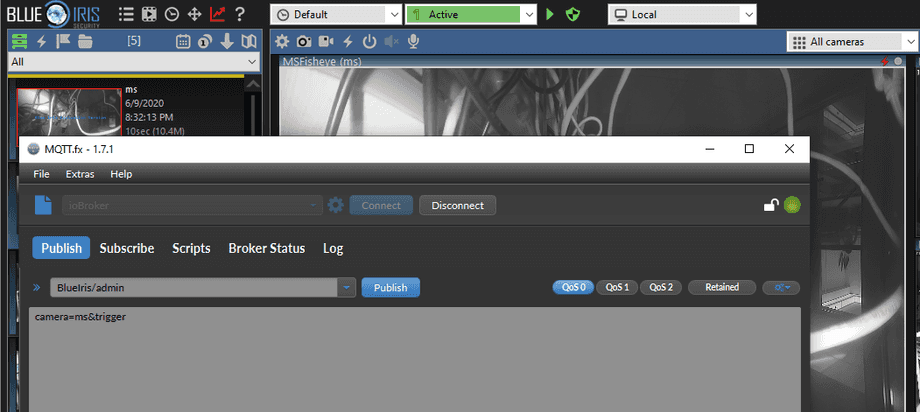
This will trigger an alert for the selected photographic camera in BlueIris and with it all activated alarm actions - e.g. warning recording, etc.
Admin Commands
This is a list of the allowed admin command that you tin apply through MQTT:
-
photographic camera=x&autocycle=1or 0 Automates the auto-bicycle function for camera 10'south frame -
photographic camera=10&alerts=10Enable or disable alerts on camera x (short name) -
camera=x&enable=1or 0 Enable or disable camera x (curt proper name) -
camera=x&escapeEquivalent to using Esc key on camera window to leave full screen or other temporary modes. -
camera=ten&flagalert=aneMark the most recent alert as flagged in the clips database and timeline. -
camera=x&flash=1or 0 Enable or disable Flash broadcasting on photographic camera ten (brusque proper name). A photographic camera reset will besides be required (&reset) -
photographic camera=10&fullscreen=oneor 0 -
camera=x&hide=1or 0 Hide or testify camera ten (short proper noun) -
camera=x&manrec=1or 0 Start or finish manual recording on photographic camera or group x (brusque name) -
camera=10&mdelay=xDelay motility detection on photographic camera x (brusk proper noun) -
camera=x&motion=1or 0 Enable or disable motion detection on camera x (short proper noun) -
camera=x&output=northward&msec=t Set up or reset the digital output northward (1-10) on photographic camera x (brusque name). Employ msec=0 to reset the output and whatever other value to set it. -
camera=x&pause=nIntermission photographic camera x (curt name). due north=-2,-i,0,1,2... for toggle, infinite, 0,+30s,+5min,+30m,+1h,+2h,+3h,+5h,+10h,+24h,+15m -
camera=10&preset=nGoto PTZ preset north on photographic camera x (short name) -
photographic camera=10&priority=x1: temporarily move camera to meridian-left position, 0: return to normal position. -
camera=x&profile=northwardForcefulness profile northward on photographic camera x (brusque proper noun) -
photographic camera=10&ptz=nPTZ command n on camera x (short name). n=0,i... for left,right,upwardly,down,center,zoom+,zoom- -
camera=x&ptzcycle=1or 0 Enable or disable PTZ preset cycle on camera x -
camera=x&reboot Rebootcamera x (short name) (as supported) -
camera=x&reset Resetcamera x (short name) -
camera=x&schedule=oneor 0 Enable or disable schedule on photographic camera x (brusque proper noun) -
camera=ten&selectSelect photographic camera ten (curt proper noun). Omit the photographic camera name (10 is empty) to de-select all cameras. -
camera=ten&snapshotSnapshot on camera x (short name) -
camera=x&trigger&memo=textTrigger photographic camera or group x (curt proper name) as an External source; optionally add text to the memo field in the database. -
camera=x&trigger=1Trigger photographic camera or group x (curt proper noun) as a Motion source -
camera=x&trigger=-1 Trigger camera (brusk proper name) as an ONVIF source -
camera=x&trigger=0Reset trigger on camera (brusk proper noun). Annotation: With the ONVIF source, the camera volition remain triggered until the &trigger=0 command is used and the pause time has expired. -
camera=10&webcast=oneor 0 Enable or disable webcasting on camera x (short name)
Source: https://wiki.instar.com/en/Software/Windows/Blue_Iris_v5/INSTAR_MQTT/
Posted by: madrugahoner1988.blogspot.com

0 Response to "How Do You Send A Camera Reboot Command Using Blue Iris Software?"
Post a Comment